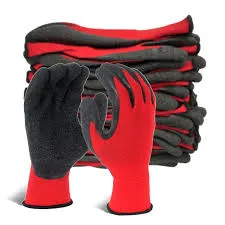osha electrical safety clothing factories
OSHA Electrical Safety Clothing in Factories Essential Guidelines for Worker Protection
In today’s industrial landscape, ensuring worker safety is paramount, particularly in environments where electrical hazards are prevalent. The Occupational Safety and Health Administration (OSHA) has established standards and regulations to protect workers from electrical injuries, and the proper use of electrical safety clothing is a critical component of these safety protocols. This article will explore the importance of OSHA compliance regarding electrical safety clothing, its application in factories, and best practices for maintaining a safe working environment.
Understanding Electrical Hazards in Factories
Factories often present a myriad of electrical hazards, including exposure to energized equipment, unguarded power sources, and accidental electrocutions. In the United States, thousands of workers are injured or killed each year due to electrical accidents, underscoring the significance of implementing stringent safety measures. OSHA regulations require employers to assess the risks associated with electrical hazards and take necessary precautions, such as providing appropriate personal protective equipment (PPE) to their employees.
The Role of Electrical Safety Clothing
Electrical safety clothing serves as the first line of defense against electrical hazards in the workplace. The primary purpose of this specialized clothing is to help reduce the risk of injury in the event of an arc flash or electrical shock. Key components of electrical safety clothing include
1. Arc-Resistant Clothing This type of clothing is designed to withstand and protect against the intense heat and flames generated by an arc flash. Made from materials that resist ignition and burning, arc-resistant clothing is essential for workers who operate near energized equipment.
2. Insulated Gloves and Sleeves These are crucial for protecting workers' hands and arms from electrical shock. Insulated gloves must meet specific voltage ratings, ensuring they are suitable for the tasks being performed. It is essential that these gloves are regularly inspected for any signs of damage or wear.
3. Face Shields and Safety Goggles In the event of an electrical arc, the face and eyes are at risk of severe injury. Full-face shields and safety goggles should be worn to protect against flying debris and heat.
4. Hard Hats While hard hats are primarily for protecting against falling objects, they can also offer insulation from electrical hazards when they are properly rated.
OSHA Standards for Electrical Safety Clothing
osha electrical safety clothing factories

OSHA mandates that employers must assess the hazards present in the workplace and provide appropriate PPE to their employees. According to OSHA’s standards, specifically 29 CFR 1910.269, employers are required to ensure that all employees working in areas with potential electrical hazards wear the correct electrical safety clothing.
Employers should also conduct regular training sessions to educate workers about the importance of proper electrical safety clothing and how to use it correctly. This includes understanding the clothing’s ratings, inspections for wear and damage, and when to replace items.
Best Practices for Maintaining Electrical Safety Clothing
To maintain the effectiveness of electrical safety clothing, employers and workers should adopt the following best practices
1. Regular Inspections Conduct regular checks on all electrical safety clothing and PPE to ensure that they remain in good condition. Any clothing that shows signs of wear, tear, or damage should be replaced immediately.
2. Proper Cleaning and Maintenance Follow manufacturer guidelines for cleaning and maintaining electrical safety clothing. Improper cleaning methods can degrade protective materials, reducing their effectiveness.
3. Educating Workers Regularly educate employees on the importance of wearing the correct safety clothing and PPE. This includes training on how to identify potential hazards and the correct procedures for working safely around electrical equipment.
4. Creating a Safety Culture Encourage a culture of safety in the workplace where employees feel responsible for their safety and the safety of their colleagues. This includes speaking up if they notice unsafe practices or equipment.
Conclusion
Incorporating OSHA electrical safety clothing standards into factory operations is crucial for safeguarding employees against electrical hazards. By understanding the risks, utilizing high-quality PPE, and adhering to best practices, employers can create a safer working environment that minimizes electrical accidents and injuries. Protecting workers is not only a regulatory obligation but also an ethical responsibility that contributes to overall workplace safety and productivity.
-
Aero Safety Helmet - OEM Gomax Aero Adult Safety Helmet, Affordable Protection for Cyclists
NewsJun.10,2025
-
Buy uvex pheos abs alpine safety helmet – OEM & Cheap Options from China Supplier
NewsJun.10,2025
-
Volman Safety Helmet - Premium Durable Protection for Industrial Workers
NewsJun.10,2025
-
Top Safety Helmet Suppliers in UAE Reliable Brands & Affordability
NewsJun.10,2025
-
Affordable Safety Helmet with Visor & Earmuffs - OEM China Supply
NewsJun.10,2025
-
Affordable Safety Clothing in Deer Park, TX Cheap & OEM Options
NewsJun.09,2025
